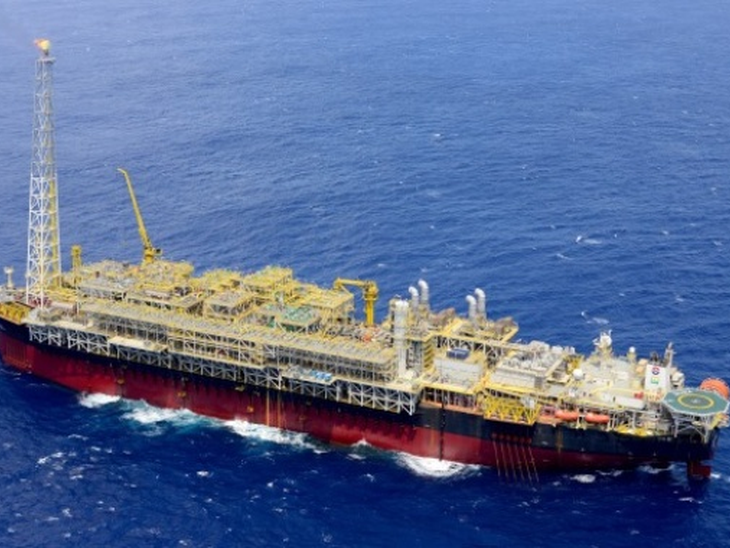Pre-salt already responds for 54% of Brazil’s oil and gas production
Press Release/T&B Petroleum
03/05/2018 19:46

In March 2018, the country's oil and gas production was approximately 3.23 million barrels of oil equivalent per day.
There were produced 2.557 million barrels of oil per day (bbl / d), a decrease of 2.3%, compared to the previous month and an increase of 0.3% compared to March 2017. The decrease was expected due to scheduled shutdowns of equipment maintenance at platforms in the Peregrino, Campos Basin and Lula fields, in the Santos Basin.
Natural gas production totaled 107 million cubic meters per day, a decrease of 2.6% compared to the previous month and an increase of 5.6% compared to the same month of 2017. The decrease was due to the stoppages of maintenance on the platforms in the Lula, Santos Basin, and Peroá / Cangoá fields, in the Espírito Santo Basin.
Production data for March are available on the ANP's Monthly Bulletin of Petroleum and Natural Gas Production, available at: http://www.anp.gov.br/publicacoes/boletins-anp/2395-boletim-mensal-da-producao-de-petroleo-e-gas-natural.
Pre-salt
The pre-salt production in March totaled 1,745 million boe / d, a reduction of 1% in relation to the previous month, and corresponded to 54% of the total produced in Brazil. 1,396 million barrels of oil per day and 55 million cubic meters of natural gas per day were produced through 83 wells.
The pre-salt wells are those whose production is carried out in the geological horizon called pre-salt, in fields located in the area defined in section IV of caput of article 2 of Law 12,351 / 2010.
Use of natural gas
The use of natural gas in Brazil in March reached 96.9% of the total volume produced. 57.2 million cubic meters per day were made available to the market.
Gas flaring totaled 3.3 million cubic meters per day, a decrease of 7.6% compared to the previous month and 4.1% compared to the same month in 2017.
Producer fields
The Lula field, in the Santos Basin, was the largest producer of oil and natural gas. It produced, on average, 832 thousand bbl / d of oil and 34.8 million m3 / d of natural gas.
Marine fields produced 95.5% of oil and 83.4% of natural gas. The production occurred in 7,584 wells, being 710 seafarers and 6,874 terrestrial. The fields operated by Petrobras produced 94.9% of the oil and natural gas.
Estreito, in the Potiguar Basin, had the largest number of producing wells: 1,079. Marlim Sul, in the Campos Basin, was the maritime field with the largest number of producing wells: 97.
The FPSO Cidade de Marica, producing in the Lula field, was the facility with the largest oil production. It produced 148.8 Mbbl / d through 8 interconnected wells.
The Arara Azul production, producing in the Arara Azul, Araracanga, Carapanaúba, Cupiúba, Urucu and Southwestern Urucu fields, by means of 33 interconnected wells, produced 7.8 MMm3 / d and was the installation with the highest production of natural gas.
Other information
In March 2018, 300 areas granted and one of sharing, operated by 30 companies, were responsible for the national production. Of these, 71 are maritime and 230 are terrestrial. It should be noted that, of the total of the producing areas, one is in exploratory activity and producing through a Long-Term Test (TLD), and another seven are related to contracts in areas with marginal accumulations.
The average degree API was 27.2, and 37.4% light oil production seen (> = 31 ° API), 48.9% medium oil (> = 22 API and <31 API) and 13.7% oil heavy (<22 API).
The terrestrial mature basins (fields / long-term tests of the Espírito Santo, Potiguar, Recôncavo, Sergipe and Alagoas basins) produced 117.8 thousand boe / d, of which 93.3 thousand bbl / d of oil and 3.9 million m³ / d of natural gas. Of this total, 112,900 barrels of oil equivalent per day were produced by Petrobras and 4,900 boe / d for concessions not operated by Petrobras, with 379 boe / d in Alagoas, 2,231 boe / d in Bahia, 45 boe / d in Espírito Santo, 2,073 boe / d in Rio Grande do Norte and 194 boe / d in Sergipe.



